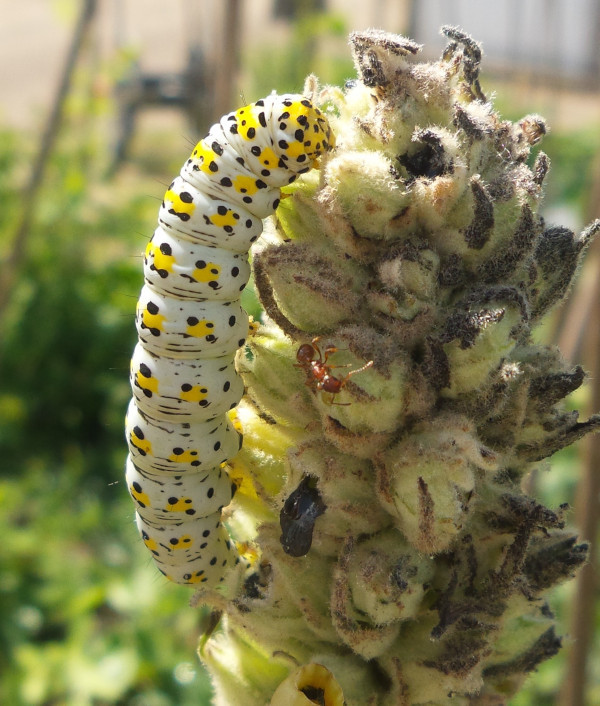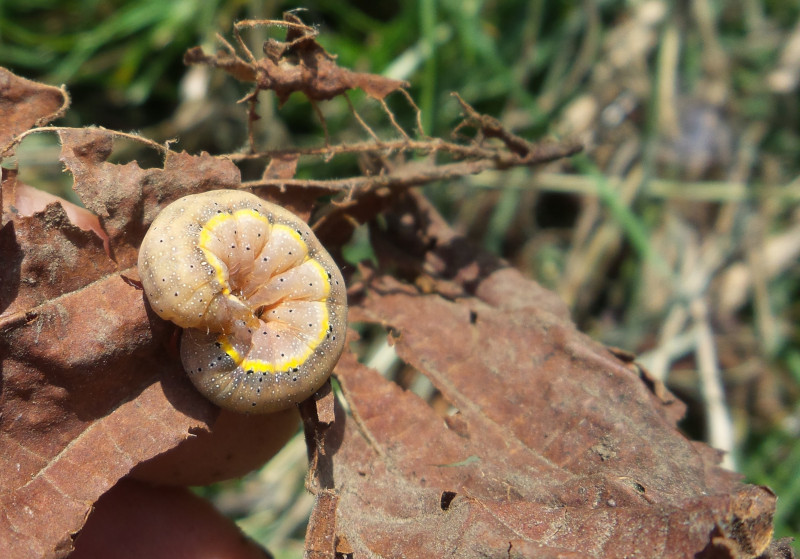How to Deal with Common Spring Garden Pests
There is a very fine line with nature when it comes to pests because some garden wildlife can be very damaging to your vegetables and fruit. I do not use pesticides or sprays because, for me, the best way is to become a collector who moves insects and caterpillars away onto sacrificial or decoy plants. That said, there is also an army of helpful beasties too like the ladybird (Ladybug US) that feeds on all those black flies and aphids on your vegetables. Bigger wildlife like rabbits, squirrels, some birds, and deer can be persuaded to move elsewhere with a few precautions. Let’s look at some of the wildlife that may affect your vegetables.
Helpful wildlife
Earthworms.
These are your friends. They eat waste in the soil. Aerate it by burrowing through and also excreting into it, thereby adding valuable nutrients and making them available for your plant roots. Earthworms lay eggs and these usually develop in cocoons. I found a nest of earthworms in an almond shell in my compost much to my surprise!
Centipedes
Centipedes or millipedes, are those orange or light brown bugs with moving legs that we rarely see for long, as they wriggle away at speed when you dig the ground.
Ladybirds or ladybugs
Ladybirds are the ones that eat blackflies, green and white flies, and aphids and many birds feed on caterpillars or earthworms but may also nibble young pea shoots or brassica plants so these are friends if eating pests but not so welcome on plants.
Some to avoid or move on
Ants
Most ants are harmless and provide children with endless entertainment watching them lift tiny crumbs to take back to an anthill. However, some ants bite so be careful. Red ants are usually the biters and can leave a nasty skin rash. Some ants harvest caterpillars and take them underground to “milk” them for the sticky dew, not knowing that the caterpillar is eating them too. Blue butterflies can pupate and emerge as an adult after a winter underground with the ants.
To work safely with ants , wear gloves. Try to leave them alone as they are not usually harmful to plants or humans.
Blackfly and aphids
If you check the tips of the stems of your broad beans in spring, usually you can find clumps of black fly feeding on the leaves, flowers, and stems and leaving a sticky mess. Aphids are usually white or transparent flying insects that leave a sticky residue too and they can destroy the foliage of your vegetables.
To protect your plants , just find a few ladybirds, move them onto the stem and you are giving them a feast. Otherwise, you can use a hose to gently wash down the stem or use a sponge soaked in soapy liquid like washing up liquid (or Neem oil) and apply this to the stem. Wash it down with clean water afterwards. The blackfly like dry stems but finding a ladybird is the best solution.
Cabbage root fly
Cabbages, and all plants in the Brassica family, are vulnerable to these flies which burrow into the soil to get at the root of the plant.
To protect your plants , place a cardboard collar around each seedling to prevent the fly from getting into the soil around the root. You can also place netting over the row to keep white butterflies laying eggs on their leaves too.
Caterpillars

Who doesn’t love caterpillars? I do, as much as the next person but a lot of them eat their way through the foliage on your veggies. In spring, the Lackey moth is very common and the Mullein moth shows up a little later. Much as I like their cheeky faces, they do munch their way through a flower bud or a blackberry plant very quickly.
Protect your plants by physically moving them onto plants you do not mind them chomping. Dandelion or comfrey leaves, nasturtiums, or the wildflower patch are good alternatives.
Cutworms, Chafer grubs, and Corn worms.

All of these cause havoc in your vegetable patch and they are easily missed due to good disguise techniques, as you can see when I placed this one on a wood bench. Cutworms live close to the surface of the soil and munch stems, sometimes destroying them completely. Chafer grubs are very common in grassland, so if your vegetable patch was grass a year ago, when you dig in spring you may find several. They literally cut through the stem of any newly emerging plant so these need to go somewhere else. Cornworms are more common in the US but they are more evident in the autumn. I found this little beauty close to my hazel tree near where my corn was planted so it was taken on holiday to some waste ground.
To protect your plants, dig the planting area well before adding plants and if you find any of these, remove them to a location miles away.
Rabbits, foxes, squirrels, and deer.
On my allotment, I am lucky because wild rabbits are not a big problem but some allotments report that they cannot grow carrots because they get eaten. It depends on what your local pests are, whether they are bunnies, foxes, squirrels, or even deer. Further south there may even be adders but these usually eat the pests and live quietly so try not to bump into them because they have a poisonous bite.
To protect your plants:
Rabbits can be deterred by wire fencing but they are ingenious at finding ways in, so check it is firmly attached at soil level.
Squirrels usually live near trees so if you have nuts, they may be visiting for food. They are difficult to stop and pretty to watch so I normally let them eat some of my hazels.
Signs that foxes are visiting are random holes dug in beds and also very pungent-smelling poop on the ground. I feel sorry for the loss of habitat for urban foxes but I do not want them in my veg garden so the best prevention is to remove any food that is available in your garden. Make sure the lid on your compost bin is secure and do not add cooked food. Foxes do not like garlic smells or chili peppers either so planting these may work as a deterrent. The last reason a fox visits may be to visit your pond for water and I cannot begrudge any animal a drink but if you want to stop them, then restrict access to the pond.
The only way to keep deer out is to not grow trees or to have high fences, at least 10 feet because they do like to jump! They are after tasty tree foliage and you normally see them at dusk because they tend to snooze in shady areas during daylight hours.
Slugs and snails
I had a child who loved to play with snails and enjoyed snail racing with pals at the allotment. Her mother feels less kind to these pests because of their voracious appetites. They hide in shady places until dusk and then move silently on damp earth leaving spooky, slimy trails that bring fear to the vegetable grower. The best time to catch them is at night so lay traps for them and collect them up and then move them on.
To protect your plants, lay a trap mat for a few days before planting your seeds. This can be black plastic, an old rug, cardboard anything that warms the ground and attracts them to the area. Lots of slugs and snails will cuddle up underneath this and you can easily move the whole lot to your compost heap, where they can demolish plants you want eaten! Use several methods to overcome slugs and snails before they reach those seedlings. Next, dig the soil and remove any cutworms you find. After that, surround new seeds or plants with cut pieces of bramble stems with thorns, and make it difficult for them to reach your greenery without getting pricked uncomfortably by thorns. Pruned rosebushes are a good alternative.
Lay offerings of leaves such as dandelions or comfrey for them to snack on before they reach your plants. Experts tell me that crushing eggshells will deter them. I have watched armies of snails slide over these so I do not believe this, but feel free to try. Coffee grounds or tealeaves are another suggestion because they do not like the surface. Both coffee and tea offer your soil some extra nutrition, so these are yet another layer of defence.
Beer traps are another suggestion and yes, they do find the container and drink from it and some end up staying in there but it will not save a row of new delicate seedlings. If it rains, get your raincoat on and protect them by physical removal.
My final response is to become a night watch person. I go out there with a torch and bucket at night-time and fill a bucket with the intruders which I then relocate to my brown recycling bin, hoping my local council will remove them for me.
Conclusion
As somebody who loves watching butterflies, it is hard to suggest the removal of caterpillars and the other preventative measures offered in this article. I have a realistic expectation that birds, insects, worms, and ladybirds are going to thrive on my allotment and I really do not mind them snacking a little. However, I hope I have given you a few ideas of how to save more of your precious vegetables and fruit from them and I would love to hear your comments so let me know how you get on. Next week we will discuss how to deal with common diseases in your vegetable garden.


